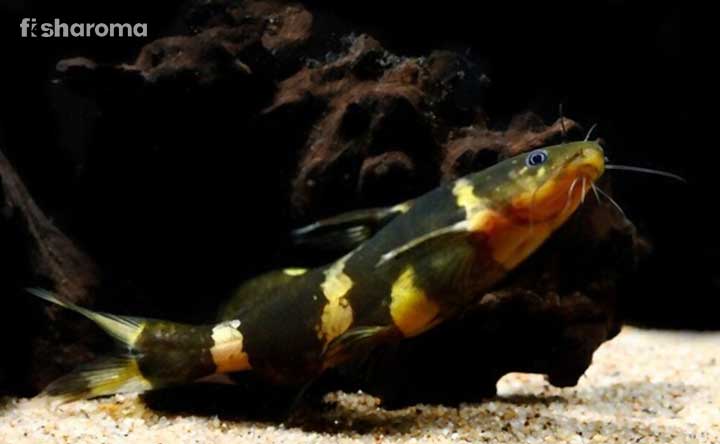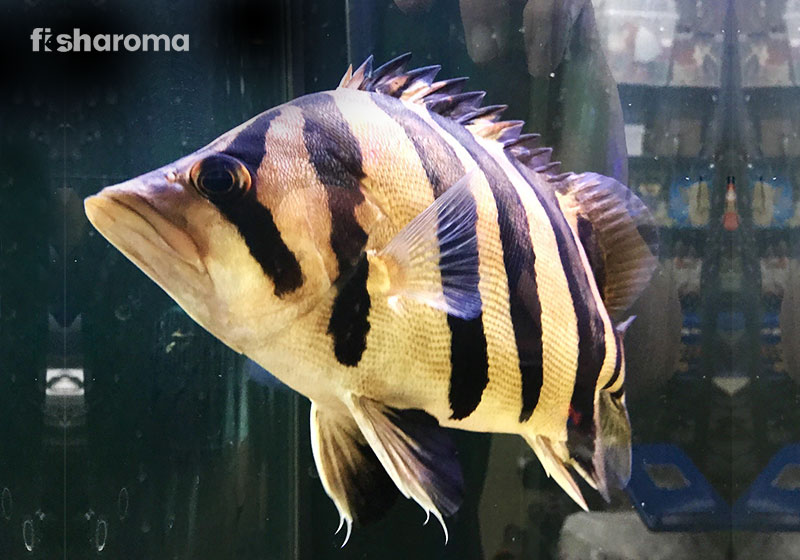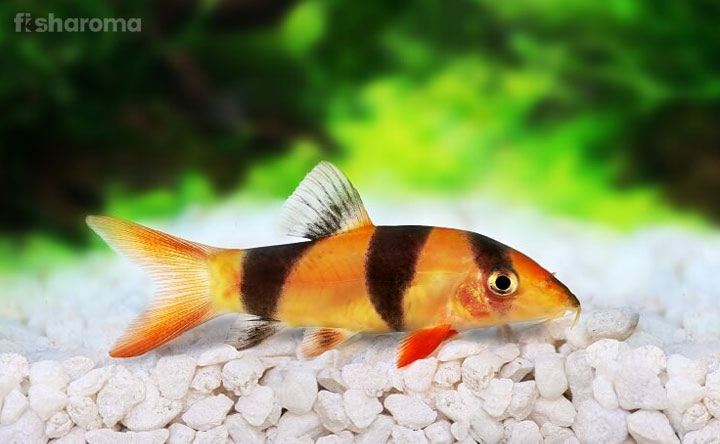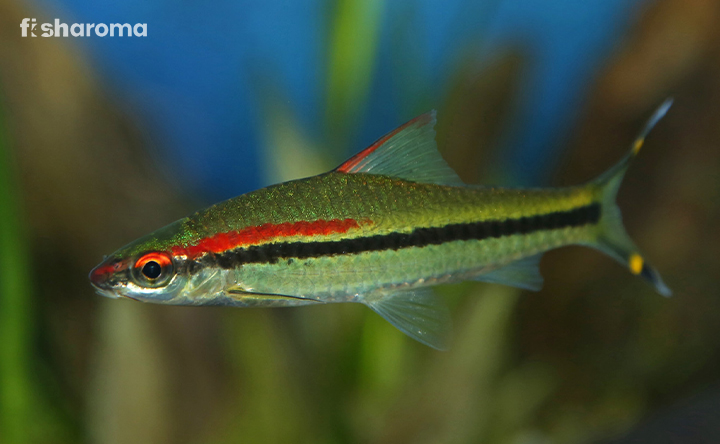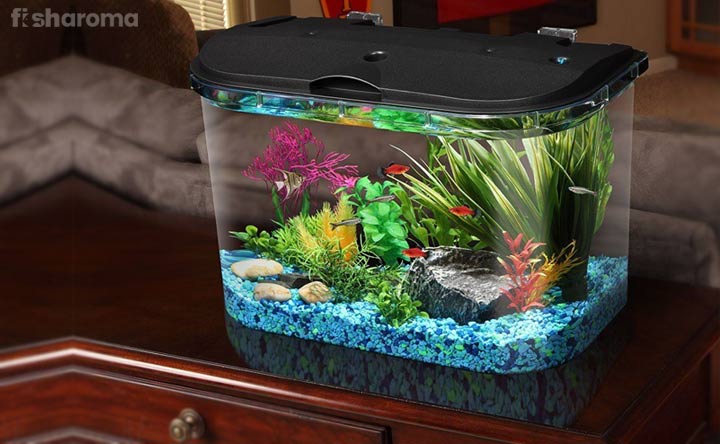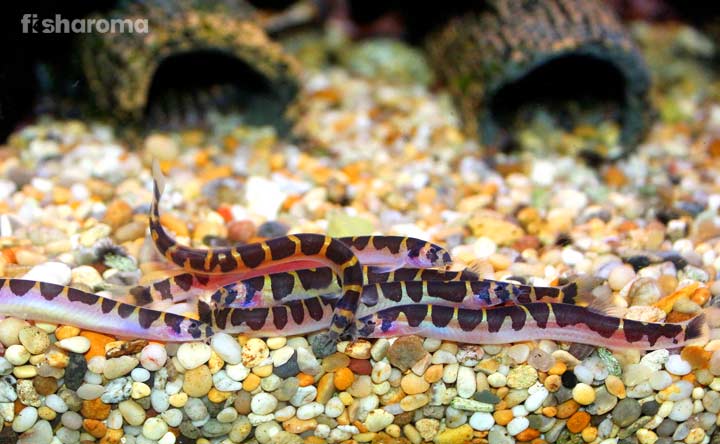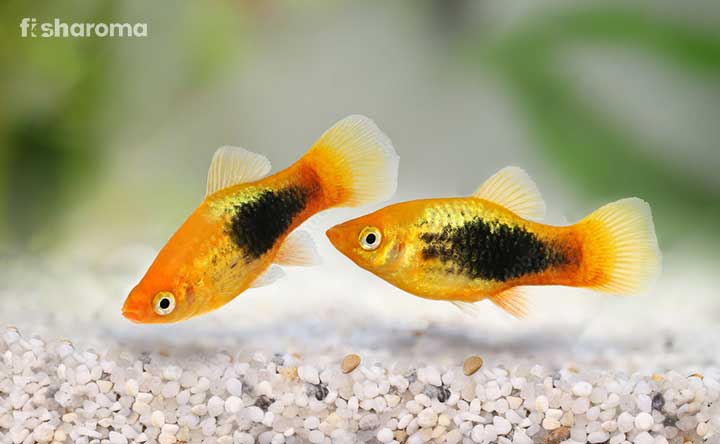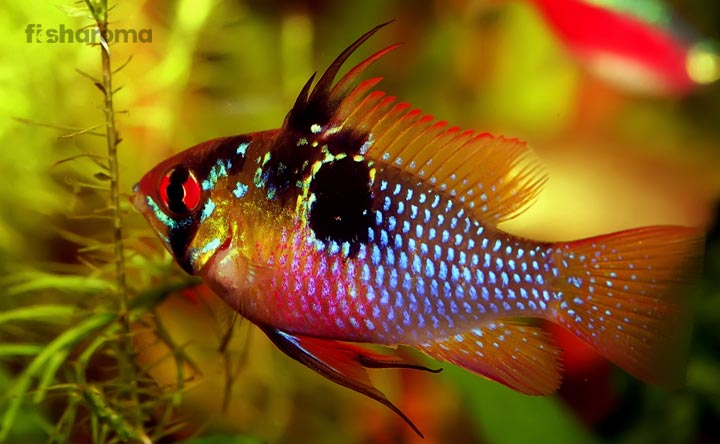Siamese Algae Eater – The Complete Care Guide for Your Tank-Cleaner Fish
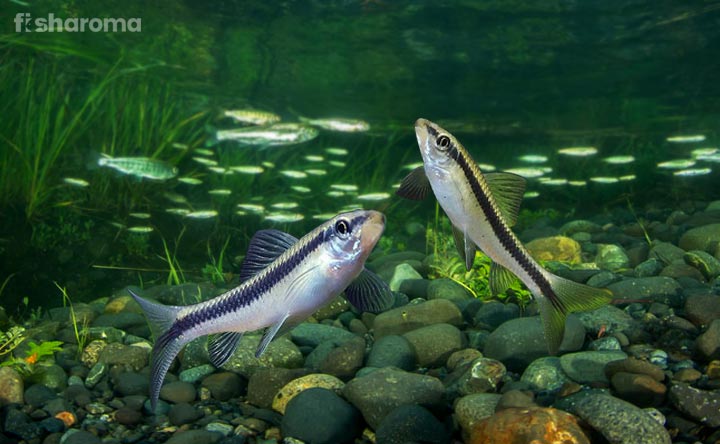
- Origin of Siamese Algae Eater
- Appearance of Siamese Algae Eater
- Temperament of Siamese Algae Eater
- Suitable Tankmates for Siamese Algae Eater
- Dietary Requirements for Siamese Algae Eater
- Tank Requirements for Siamese Algae Eater
- Water Type for Siamese Algae Eater
- Breeding of Siamese Algae Eater
- Diseases of Siamese Algae Eater with Interventions
Some fish hobbyists look for tank cleaners that will not only be an aquatic friend but it will also be an aquatic home cleaner like Siamese Algae Eater. You will really need less effort to clean the tank because this freshwater fish is an expert in eating algae and other wastes from your aquarium.
This active and social fish is easy to care because of its peaceful and hardy nature. Both beginner and expert fishkeepers can pet this algae eater because neither it is a fussy eater not it has a crucial tank requirement.
Quick Details on Siamese Algae Eater
If you want to keep this tropical fish in your fish tank then we are here to help you with a complete care guide about this algae eater. First of all, take a short look at the features and characteristics of this fish that is mentioned in the table.
| Scientific Name | Crossocheilus oblongus |
| Origin | Indonesia, Thailand, and India |
| Life-Span | 8-10 years |
| Colors | Black, Gold, Gray, Silver, and White |
| Temperament | Peaceful |
| Size | 6” (15.24 cm) |
| Diet | Omnivoros |
| Family | Cyprinidae |
| Compatibility | With Peaceful Species |
| Tank Size | 10 gallons |
| Care Level | Easy |
Overview
Siamese Algae Eater usually lives up to eight years but in special cases, it can live up to ten years. This tropical fish of Cyprinidae family is generally found in the Asian regions. It is active than other algae eaters like Snail and Shrimps. You will get this fish from $3-$5.
Don’t get confused between a Siamese Flying Fox and Siamese Algae Eater because both of their appearances are similar. However, it is taller than Siamese Algae Eater. Moreover, Siamese Flying Fox has flaps on the corner of their mouth while Siamese Algae Eater does not have that flap.
Origin of Siamese Algae Eater
Native to Southeast Asia, Siamese Algae Eater of Cyprinidae family is usually found near the rivers of Malaysia and Thailand. Now you will find this fish in other countries also, as it is exported from one place to another just for its beginner-friendly and algae-eating nature.
Appearance of Siamese Algae Eater
This 6” (15.24 cm) fish has a slim, narrow and long body. You will find this algae eating species in various colors such as golden, gray, black-white and silver. You will find pale gray and black stripe on the body of this fish.
When they mate with their partners, the stripes start fading because of aggression and exhaustion. Until they are 3-4 years old, you will not find any difference between the male and the female fish. After four years old, females become 30% larger in size than males. It can also camouflage itself to hide from predators.
Temperament of Siamese Algae Eater
This fish is a bottom-dweller and most of the time it is seen sitting on the rocks or swimming at the bottom of the tank.
It becomes active while swimming and it rarely becomes aggressive when it is kept with a wrong tankmate. It never attacks and disturbs other tankmates unless they disturb this fish. This fish actively eats up the algae and other contaminants of the fish tank.
Suitable Tankmates for Siamese Algae Eater
You can keep peaceful and social aquatic species with Siamese Algae Eater in a community tank. Just remember, never keep them with slow-moving fish that irritates this active fish. Moreover, avoid keeping aggressive and large predators in its tank which can harm or eat up this fish. Some of the best companions for this fish are:
- Bristlenose Pleco
- Cory Catfish
- Guppies
- Danios
- Tetras
- Nerite Snails
- Amano Shrimp
- Ghost Shrimp
Unsuitable Tankmates
Aggressive and larger fish breeds than this fish can harm it, so avoid keeping such aquatic species.
- Cichlids
- Red Tail Sharks
- Oscars
- Arowanas
- Tiger Barbs
- Goliath Tiger Fish
- Peacock Bass
- Giant Wolf Fish
Compatibility of Siamese Algae Eater
You can keep about four Siamese Algae Eaters together in a tank because they are generous in nature and they never are aggressive with one another.
Dietary Requirements for Siamese Algae Eater
The primary dietary requirement of this fish is clear with its name, Siamese Algae Eater. This omnivorous fish eats both vegetation and meaty foods but algae are its first choice. This fish is also a scavenger that eats parasites from the body of other breeds and cleans the dirt of the tank by eating the contaminants. Once you start feeding the fish, maintain the timing. Don’t overfeed the fish because that can lead to swim bladder diseases and bloating.
It is not a picky eater, so you can feed pellets, fresh foods, live foods, and frozen foods to this fish. Some favorite foods of this fish are:
- Algae
- Bloodworms
- Brine Shrimps
- Insects
- Plant Leaves
You can also feed some readymade foods to this fish such as:
- Hikari Sinking Wafers
- API Fish Foods Pellets
- Fluval Bug Bites
- Tetraveggie
Tank Requirements for Siamese Algae Eater
Near the densely planted rivers and streams of Southeast Asia, this algae eater is found that is closely related to Asian Carp. Usually, this fish is found in slight acidic tropical water that does not have fast current. Lots of rocks, plants, and logs are always found under the surface of the water where this algae-eating fish lives. If you want to create a natural environment for this fish, then maintain the following requirements:
Tank Size
If you arrange a 10-gallon tank, then it will be easy to keep Siamese Algae Eater in a group, as it needs a spacious place to live and swim.
Ornament
It is better to keep fine sandy substrate which will not harm its barbels and scales. You should also keep some freshwater plants like Hornwort and Java Moss in its tank to maintain greenery. Moreover, driftwood should be kept in the aquarium because the algae on its body are eaten by this fish. Keep small caves for this fish, so that it can hide and take rest in the cave.
Lighting
Good lighting is needed in the fish tank of this fish because algae grow because of lights, so try to provide it.
Filter
You can keep a normal filter in the tank of this fish because it is naturally a cleaner and the plants kept in the aquatic world helps in oxygenating the water.
Water Type for Siamese Algae Eater
This fish likes dwelling in mildly warm water, so arrange the water of the aquarium according to that. It will be better if you keep aerated water in the aquarium. Also, follow some requirements given below:
Temperature
The water temperature should be 75-79°F (23.88-26.11°C)
pH Level
The pH level of the water should be 6.5-7.0.
Hardness
The hardness of the water should be 5-20 dGH.
Cleaning Method
You don’t have to put much effort into cleaning the tank for this fish because it is a natural cleaner that eats up the entire algae in the aquarium and make the fish home algae-free. Just scrub out the objects and walls of the tank with mild liquid soap and a soft brush. After washing, wipe out the walls and corners of the fish tank with a cotton cloth.
Replacement Process
Tank water is needed to be replaced once in a week or in a month. If you are replacing it in a week, then change about 10% of water and if you are doing it monthly then about 20% of water is enough to maintain the quality of the water in the home of this fish.
Breeding of Siamese Algae Eater
When this fish turns adult, the females become larger and round in shape and the males become shorter and slimmer. If you want to encourage its breeding, then keep a male and female Siamese Algae Eater in a separate fish tank. This fish does not have any special season for spawning and laying eggs.
Once the eggs are hatched, keep them in another tank to save them from other fish. After hatching, you can feed small worms and insects to the little fries.
During the mating process, the male Siamese Algae Eater will burrow through a substrate and try to entice the female to follow it. This process is known as shimmying or tail-standing.
Diseases of Siamese Algae Eater with Intervention
As we know that this is an algae eater and a scavenger, so it is prone to various diseases. Therefore, you need to maintain its food quality, and you also need to maintain the hygiene of the water.
When this fish becomes ill, it becomes inactive and starts feeling low. Always be careful of what you are adding in the fish tank because wrong tank materials can also be a reason for several diseases. Some of the illnesses of Siamese Algae Eater are:
- Ich
- Parasite Infections
- Bacterial Infection
- Bloating
If you are seeing your pet fish in trouble then take it to a veterinary doctor who can suggest appropriate medicine. The wrong treatment can lead to constipation and digestive problems.
Try to change about 10-15% of the water twice in a week and avoid feeding cheaper and unrefined foods since they can be the reason for several diseases like bloating and swim bladder infection. Also, try to be careful with the decorations of the fish tank because decorative objects made of harmful products such as plastics can carry toxins which are the main source of harmful diseases.
Interesting Facts about Siamese Algae Eater
- Another name of Siamese Algae Eater is Black Brush Algae Eater.
- The male fish has long tubercles that grow in its mouth.
Know about More Algae Eaters
There are many other algae-eating fish and crustaceans which are deliberately kept by the aquarists in their fish tank because they naturally clean the tank and along with that, they are good aquatic pets. Know about some of them by going through their care guides:
- Bristlenose Pleco: Like Siamese Algae Eater, Bristlenose Pleco is also a bottom-dweller that lives at the bottom of the tank and eats algae. Know about its ultimate care guide.
- Amano Shrimp: Not only fish but crustaceans like Amano Shrimp is also a good algae eater that keeps the fish tank clean by consuming insects, wastes and algae. To know more about them read the entire care guide of this invertebrate.
- Algae Eaters of Aquarium: Do you want to know the reasons of algal-growth and the algae eaters, then take an entire look on the article of the different types of algae eaters.
- Cherry Shrimp: This bright-red Cherry Shrimp is also one of the best tank cleaners because it also likes eating algae. You need to know how to take care of them if you want to keep this invertebrate in your aquarium.

